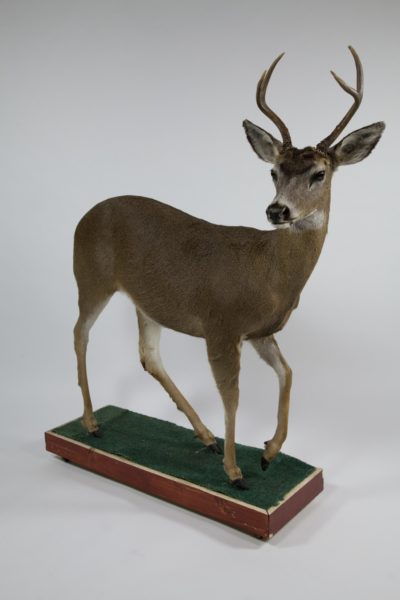Co-produced with Nature Vancouver in celebration of its centenary, New Exhibition Challenges Visitors to Explore and Engage with the Natural World

The exhibition, designed by architects Daniel Irvine and Chad Manley, features two main experiences: The Encounter Room and the Engagement Room.

The Encounter Room features stories by local nature lovers, designers, and Indigenous knowledge holders that are surprising, unsettling, and strangely beautiful. As the pattern of rain echoes around them, visitors huddle under a tarp and listen to stories about this vital natural element; They eavesdrop on a hunting story, while sitting at a table across from a Roosevelt elk; and they traverse a wildlife corridor of large mammals—some, like the coyote, co-habiting with us today; others, like the wolf, regionally extinct. The Encounter Room also challenges visitors to discover themselves as physical creatures through crawling spaces, a climbing wall, and hidden animals that can only be discovered through peepholes.

The Engagement Room offers a counterpoint where visitors can study and share cultural knowledge about nature. Large interactive learning pods will present natural history specimens (flora and fauna), soundscapes, and short films; the themes shared in the pods were identified by an advisory group of environmental educators, Indigenous cultural workers, public health and forestry researchers, and architects. A crowd-sourced map showing “nature hotspots” in the city and a shadow puppet theatre will ask visitors of all ages to think about their own encounters with nature, while sound stations and matching games will test their knowledge of birds, plants, and animals. Displays point to the loss of local biodiversity associated with urbanization and a call for action to mitigate environmental degradation.
Wild Things is the first MOV exhibition to physically embody sustainability; therefore, a significant portion is built from reclaimed construction materials. Creating an exhibition within these parameters is the first step toward formalizing a policy that will insist on extensive upcycling of materials in the fabrication of all MOV exhibitions. This effort is supported by the Upcycle Vancouver program, a municipal experiment spearheaded by the Vancouver Economic Commission that aims to create a no-waste city.
To complement the exhibition, MOV and Nature Vancouver are pleased to offer a host of public programs to elaborate on themes of the exhibition including: educational interactive display stations, nature walks and bird watching in Vanier Park, roundtable discussions on eco-design, workshops to hone your outdoor survival skills, nature drawing classes, a film screening, and more.
For more information about Wild Things and special programs in support of this exhibition, visit museumofvancouver.ca.
About Museum of Vancouver (museumofvancouver.ca)
The Museum of Vancouver connects Vancouverites to each other and connects Vancouver to the world. The museum’s programs, exhibitions, and collections bring people together and inspire conversation about the future. The museum is an independent non-profit organization dedicated to inspiring a socially connected, civically engaged city.
About Nature Vancouver (naturevancouver.ca)
Nature Vancouver is a Greater Vancouver-based nature organization, founded in 1918 by Professor John Davidson, to foster public interest and education in the appreciation and study of nature, and to encourage the wise use and conservation of our natural resources. The organization is a not-for-profit charitable society registered under the BC Societies Act. Membership in the Society is open to all. The Society is a Federated Club of BC Nature.
| LISTING INFORMATION | MOV and Nature Vancouver present Wild Things: The Power of Nature in Our Lives |
| Dates: | June 28, 2018 through September 2019 |
| Opening: | June 28, 2018 at 10am |
| Address: | Museum of Vancouver 1100 Chestnut Street, Vancouver, BC |
| Website: | museumofvancouver.ca |
| Social Media: | facebook.com/ twitter.com/museumofvan instagram.com/museumofvan/ youtube.com/user/ #WildThings #MOVNatureAndMe |
All images provided by Museum of Vancouver

